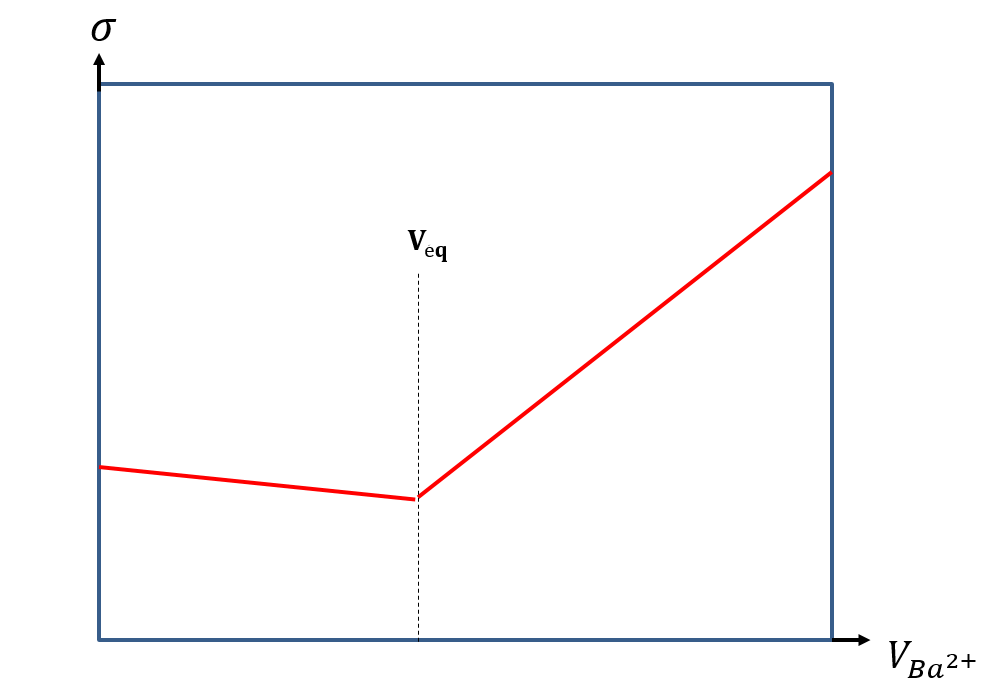Determination of SO42- ions with a conductimetric titration
Dosing principle
The determination of SO42- concentration is based on the titration of SO42- ions by adding barium chloride. A white solid BaSO4 is formed:
This titration is monitored using conductimetry. Before the equivalence point, SO42- ions in the solution (alongside other ions present in the water to be analyzed) are consumed by Ba2+ ions. Some chloride ions are added to the solution as well during this first step. As 𝜆°(Cl-) 42-), the conductivity of the solution decreases slightly. After the equivalence point, Ba2+ and Cl- ions are added without being consumed. The conductivity of the solution then increases sharply.
Note:
In practice, it often happens that before the equivalence point, conductivity increases significantly contrary to what is theoretically expected below. This increase is due to the formation in solution of solvated ion pairs (Ca2+, SO42-)(aq) especially in calcium-rich water. These ion pairs are neutral and therefore do not participate in conductivity. Moreover, they are in equilibrium with Ca2+ and SO42- ions in so-called free solution according to the following reaction equation:
During the titration, before equivalence point, the addition of Ba2+ results in the formation of BaSO4(s) by reaction with free SO42-(aq) ions. The SO42-(aq) ions are consumed which displaces the above equilibrium and leads to the dissociation of the neutral ion pairs into Ca2+(aq) and SO42-(aq) ions. When BaCl2 is added before equivalence, in addition to the SO42- ions consumed and the Cl- ions added (from BaCl2), the medium is enriched with Ca2+ ions and new SO42- ions from the dissociation of the ion pairs. This explains the increase in conductivity often observed.
Refer to the conductivity sheetData:
pKs(BaSO4) = 9.9; 𝜆°(Ba2+) = 12.72; 𝜆°(Cl-) = 7.63; 𝜆°(SO42-) = 16.






